Best guitar amps 2026: Our pick of combos, heads and pedalboard amps for all budgets and abilities
Our expert pick of the best guitar amps for rock, metal, blues and more – including tube, solid-state and digital modelling amplifiers
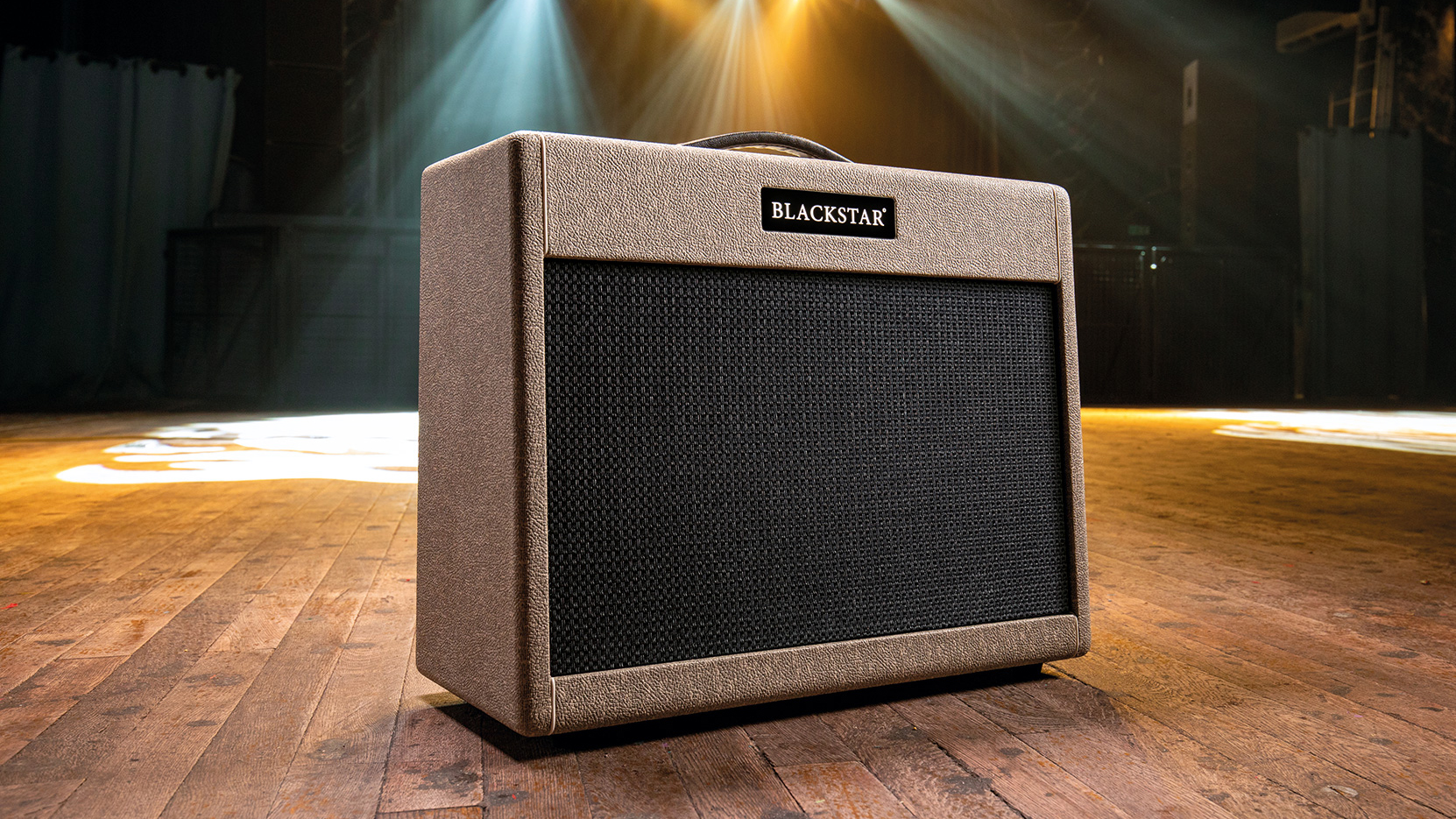
While you may not think it, finding the best guitar amp for your needs is one of the most challenging – and important – gear decisions you're ever likely to make. Luckily it's also one of the most fun – because the choices are huge, and the technology continues to expand in terms of the flexibility and finesse available to players. Your guitar amp drastically impacts your overall tone, and if you choose wisely, you'll unlock tonal possibilities you never knew were possible.
It’s crucial that you find yourself an amp that suits your needs. After all, a bad guitar can sound great through a good amp, but a naff amp will clip the wings of even the nicest of guitars. An amplifier’s tones and response can also make a huge difference to your playing style - and certain amps will definitely respond differently to certain playing styles - so our advice is that when you find an amp that you get along with, don’t let that thing out of your sight!
This guide contains what we think are the best guitar amps on the market right now – and we've recognised the growing market of great pedal amp options in our selection too. They’re all listed in price order to help you choose the right amplifier for your budget, and you should find something for all styles here too. There’s an amp in this guide for all occasions, and in a variety of formats, ranging from high-powered amp heads to tube combos and super-portable pedalboard options.
We’ve included some super handy buying advice at the end of this guide for anyone who’d like to learn more about buying one of the best guitar amps. If you’d like to read that buying advice, simply keep scrolling to the end of the article.
Best guitar amps: Our top picks
We’ve actually got four top picks for the best amp right now. The first of which has to be the Positive Grid Spark. This mightily little amp combines a slew of epic guitar tones, effects and handy teaching aids in a small and affordable package - what's not to love about it?
Next up is the Fender ’68 Princeton Reverb, which offers some of the sweetest Fender tones we've ever heard. Tune in for pristine, shimmering cleans that break up nicely, with onboard spring reverb and tremolo to sweeten your tone further. It’s ideal for small gigs, recording and manageable enough for the home – especially if your dirt comes via a pedal.
The Victory VC35 The Copper is a single-channel, 35-watt lunchbox head serving up a sumptuous smorgasbord of rock and blues tones – the VC35 has got the sort of performance that invokes the “B” word. With an EL84 power section and a NOS EF184 pentode, the flavour is very much British, with that winsome musical chime that calls to mind vintage Vox amps. Lovely stuff.
If you're after the very best in amp modelling, then look no further than the Neural DSP Quad Cortex. It's an all-in-one floor unit, which is capable of some frankly incredible things. With thousands of amp models available from Neural DSP's Sound Library and myriad different outputs, inputs and MIDI functionality, we're properly impressed.
Best guitar amps: Under $/£500

Specifications
Reasons to buy
Reasons to avoid
Where to start with the Spark 40? Well, it just stops short of cooking your dinner, but it has most other essential functions covered – and a few more besides. Its core centres around Positive Grid’s BIAS Tone Engine modelling tech, which allows it to put together a formidable collection of amp models and cover all bases tone-wise.
Altogether there are 30 amp models to choose from, and 40 effects, so it’s punching big numbers already in the context of desktop amp functionality, but with the accompanying app, the Spark offers a transformative experience. It may well change how you think about guitar amplification - it certainly changed our thinking.
The Spark’s Smart Jam feature allows you to play some chords or a riff and the amp will generate a backing track for you to play to. Who needs friends? Auto Chord allows you to stream music from your mobile device to the Spark and it will transpose the chords so you can play along. As a learning and practice tool, it doesn’t get much better.
There are outputs for recording and silent practice. Sure, it’s 100 percent digital, but it feels analogue, and crucially it sounds great at low volumes. When you crank the Spark, its dual 4” speaker setup fills the room with a sound that has no right to be so three-dimensional.
Read the full Positive Grid Spark 40 review
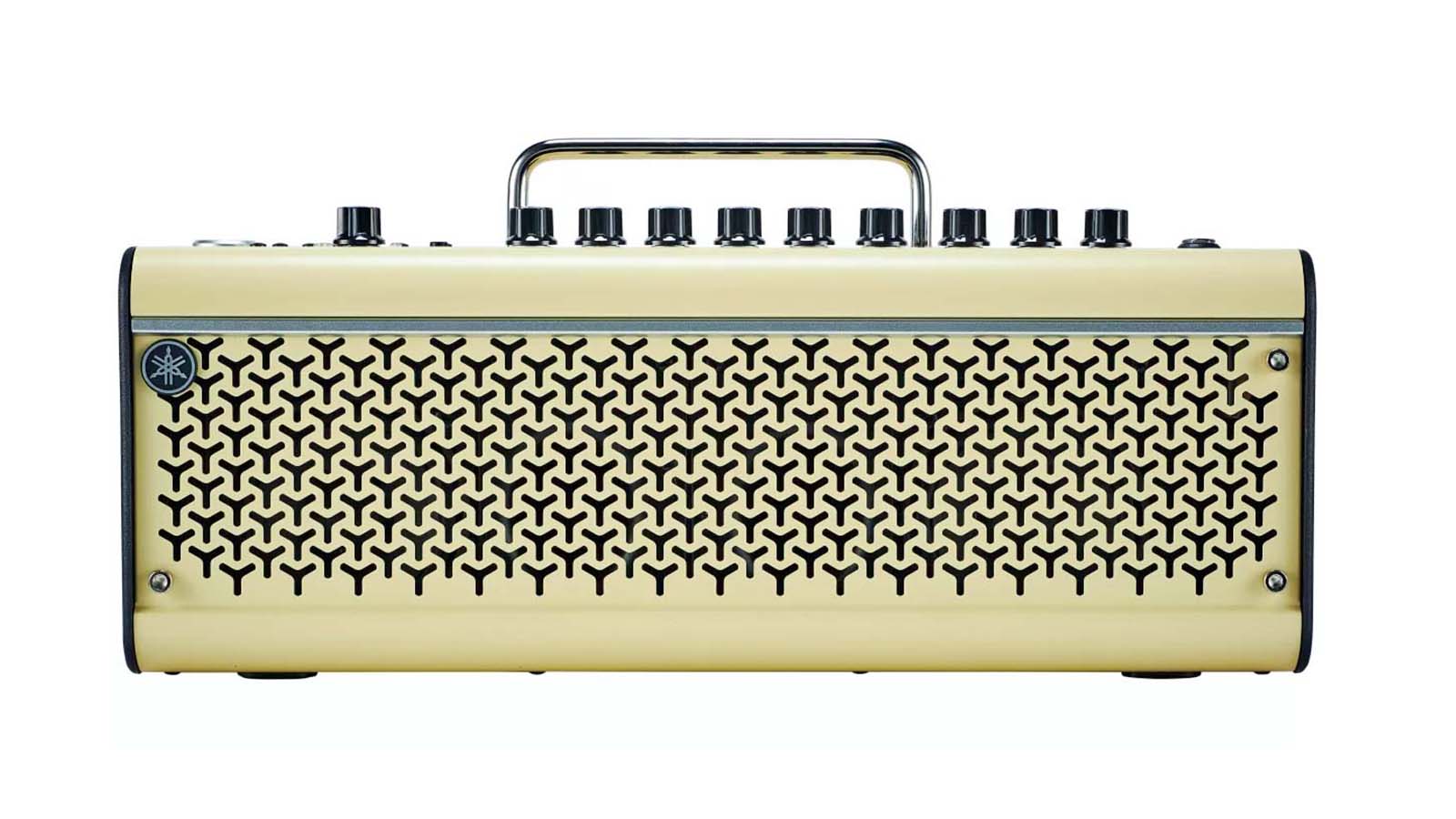
2. Yamaha THR30 II Wireless
Our expert review:
Specifications
Reasons to buy
Reasons to avoid
Yamaha’s THR series remains groundbreaking. It looked to dress the guitar amplifier in home audio stylings, pack it with digital functionality that – crucially – was rooted in the feel and response of valve amplifiers, and make it portable.
Well, amps don’t get much more portable than the THR30 II Wireless. It can be operated via the 15V DC power supply, or, alternatively, charge it up and take it out with you to enjoy 15 watts of stereo solid-state power in the park, by the beach, on top of a skyscraper a la U2. Whatever you like.
It is bundled with Cubase AI, has a very respectable complement of onboard effects, and with headphones and USB outputs it is a sound option for home recording and late-night practice sessions. It also looks so good you could leave it in the living room without getting a ticking off.
Read the full Yamaha THR30 II review
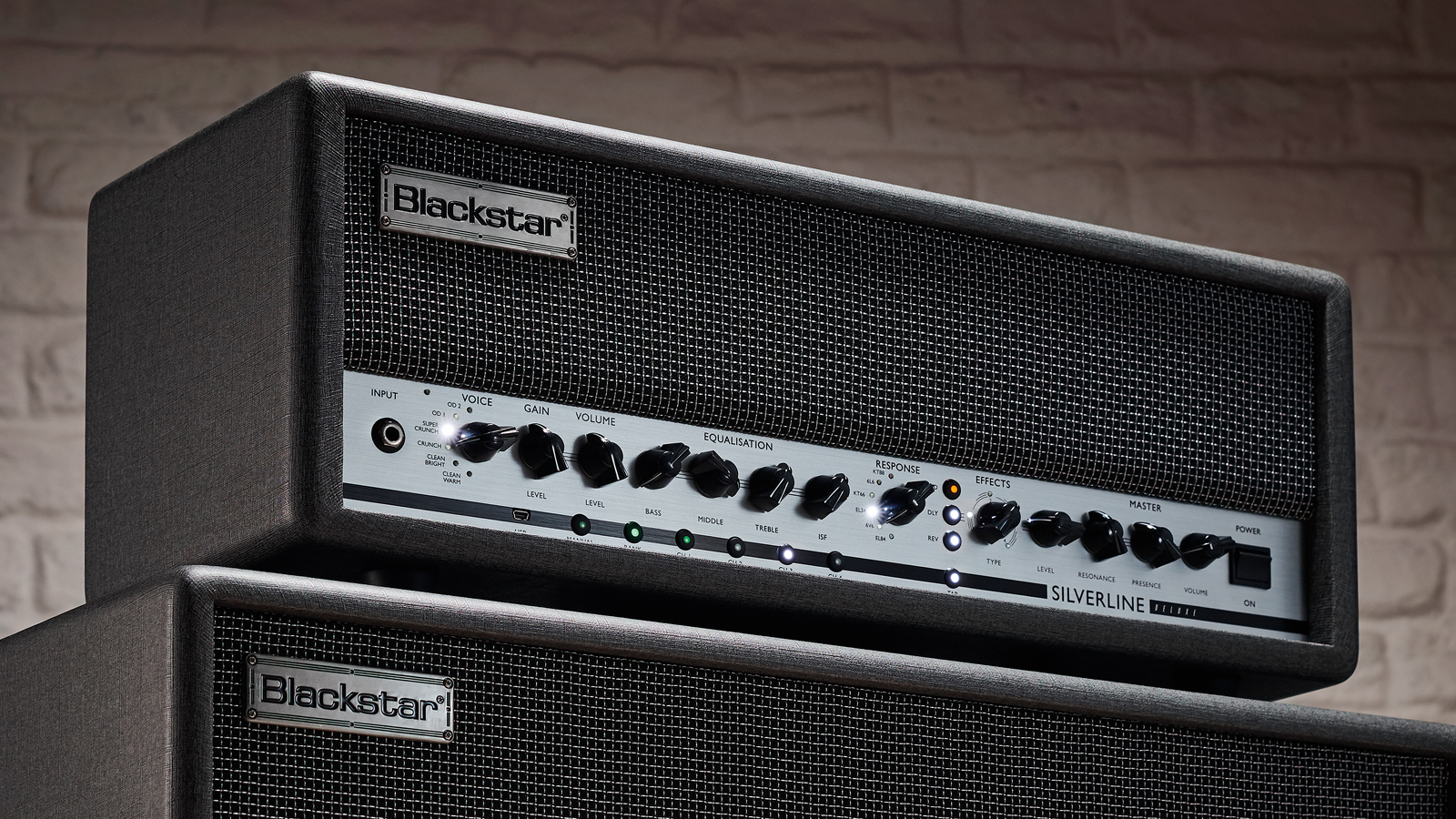
Specifications
Reasons to buy
Reasons to avoid
When Blackstar launched its Silverline series, it was as though digital modelling amplifiers had grown up, bought their first suit and got a real job. The “B” word was invoked, and with good reason, because the grey-silver on grey designs, the feature-set, the seriousness, make everyone stop for a minute and consider their options.
With the Silverline, there are many. If you like the idea of the Silverline but aren’t looking for a head, the range also includes the 20W Standard 1x10”, the 50W Special 1x12”, the 100W Deluxe 1x12”, and the 2x100W Stereo Deluxe 2x12” combos.
The setup and look on each is similar, with Blackstar's SHARC processing tech under the hood to keep the tones legit. There are effects, programmable settings, and TVP tech allowing you to select the power-tube emulation you prefer. In our opinion, they look and sound like real valve amps, but have all the mod cons that tomorrow’s player needs today. Credible, convincing, state-of-the-art.
Read the full Blackstar Silverline Deluxe review
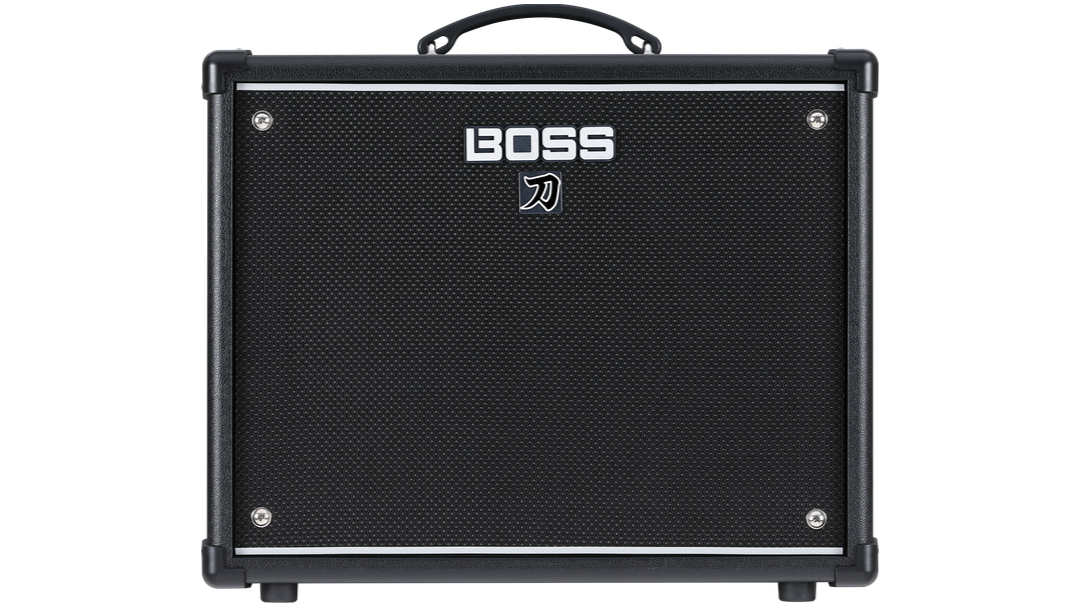
Specifications
Reasons to buy
Reasons to avoid
The Katana series has been a huge success for Boss since emerging in 2016 – and this is the latest 2024 iteration, an update to the already impressive MKII. The core proposition remains; offering a strong lineup of amp models, alongside effect emulations that draw on Boss's proven prowess, at affordable prices.
The core amp models and ease of use here remain as great as ever – the cleans sparkle, while the crunch captures breakup impressively alongside the brown channel's harmonically musical higher gain.
Alongside the wealth of effects (up to five of which you can have at once) and the new experience of controlling them via the additional investment of a footswitch, it's the best Katana experience yet.
Read the full Boss Katana 50 Gen 3 review

Specifications
Reasons to buy
Reasons to avoid
The Universal Audio Dream '65 is a modelling homage to the Fender Deluxe Reverb amp of the same year, beloved by celebrated recording artists and session players for decades. That it captures much of the detail and response in a compact pedal is testament to the engineers at Universal Audio, but moreover the Dream '65 actually builds on the original amp in terms of features.
In addition to being able to set up two switchable different amp and boost settings with six different and varied speaker choices (three are available out of the box with three more downloadable via the UAFX Control app), the boosts here recognise two of the most iconic mods in Deluxe history, used by players including Steve Lukather and Stevie Ray Vaughan. These allow enhanced mids and bottom end and they take an already versatile amp pedal into new realms of gain capability.
In addition to some fantastic spring reverb – the same algorithm found on the UAFX Golden Reverberator pedal – there's onboard vibrato too. But for pedalboards perhaps the best news is this is currently the best amp pedal platform in terms of superlative clean tones; offering a great platform for your other pedals with the headroom you'll need for live use. We know because we've gigged with one and the playing experience is the closest to Fender's $1,600 valve amp we've heard from a digital modelling pedal.
Read the full Universal Audio UAFX Dream '65 review
Best guitar amps: $/£501 - $/£1,000
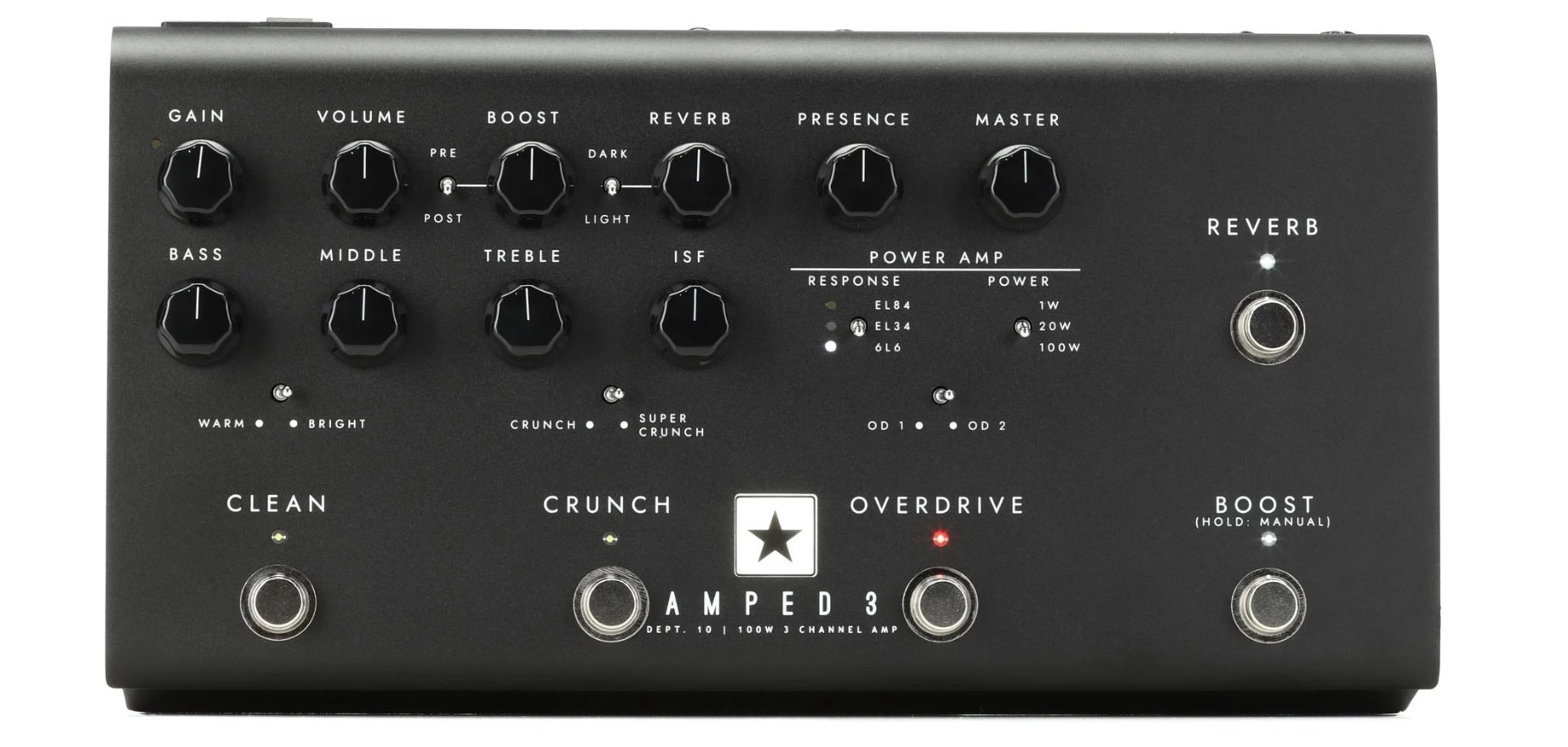
Specifications
Reasons to buy
Reasons to avoid
Blackstar isn't just serious about solid-state and valve amps, its entry into the pedal amp market has been multi-faceted and highly impressive. The third model in its Amped range is all about gain – though it's about more than metal and can handle everything from clean to blues-rock tones on your pedalboard very well too.
A three-channel front end with two voices for each and boost ensures you can cover a lot of ground. Blackstar even offers a range of power amp responses to voice Amped 3 to your liking – including EL84, EL34 and 6L6 options. So while this doesn't contain any valves like Blackstar's Dept 10. preamp pedals, it sounds and reacts like it does.
All that would be impressive in itself, but Blackstar has gone above and beyond here in terms of features and connectivity. Its CabRig (Blackstar's deeply-editable take on IR) is included with three presets for recording and going out to a PA, you can save your settings for most of the parameters in Amped 3's Patch Mode, there's an onboard effects loop, it can power your other pedals (up to 500mA current draw) and the Blackstar logo lights up. Which is nice! An impressive amp solution, and all on your 'board.
Read the full Blackstar Dept. 10 Amped 3 review

Specifications
Reasons to buy
Reasons to avoid
There is a reason why the Blues Junior tops the best-seller charts for valve-amp combos. Its USP is putting classic Fender tones into a super-affordable package that’s portable, fuss-free and is tooled for our present moment where we want great tube tones at low volumes and pedalboard compatibility.
But even before you bring your ‘board into play, the tight low-end and sparkling high-end of the Blues Junior will put a spell on you. The FAT switch is an act of modest genius, doing exactly what you’d imagine it would, widening the frequencies and adding a beer gut to your single-coil tone.
The FAT switch is really the only thing you’ll find on the control panel that requires explanation, otherwise the Blues Junior is just a straight-up, fuss-free combo, and, dare we say it, a modern classic. Drive it hard and you’ll enter blues-rock nirvana.
Read the full Fender Blues Junior IV review
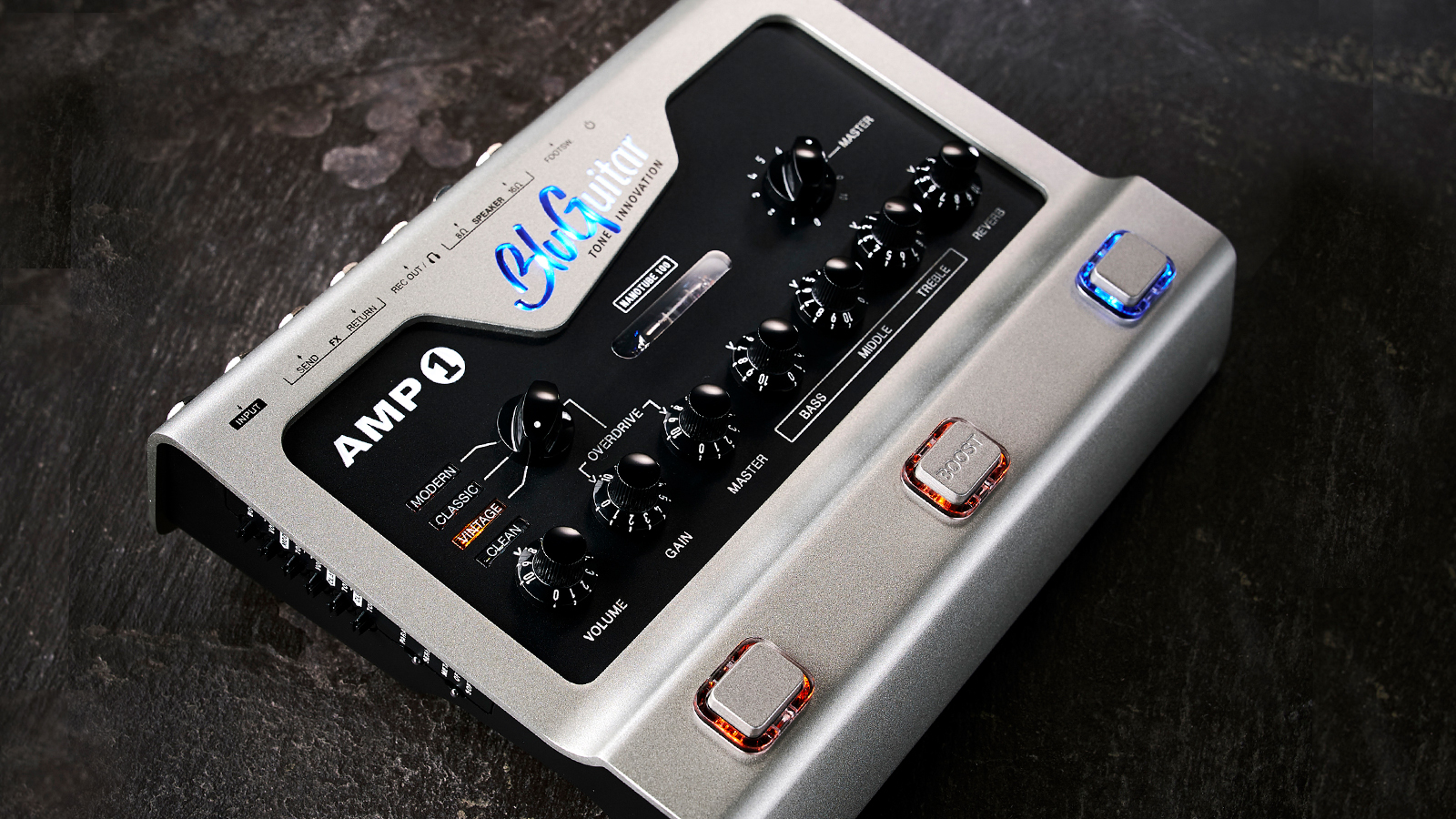
Specifications
Reasons to buy
Reasons to avoid
Like the best innovations in guitar technology, the Thomas Blug’s Amp1 keeps all the clever stuff hidden from sight, allowing players to concentrate on what is frankly difficult enough – playing the guitar.
But the Amp1 really is clever. It’s the size of a multi-delay unit, you can throw it in a bag and take it wherever, and yet offers you four channels, 100W of Class D power, with some analogue mojo fairy dust by way of a sub-miniature Russian twin triode.
Simply select which channel you want – Clean, Vintage, Classic, Modern – and dial in your tone via the 3-band EQ and volume, master and gain controls. It’s just like a real amp, and that’s the point – it is. This is the shape of amps to come.
Partner it with the Remote1 footswitch you can access all four channels, boost and reverb via MIDI, plus add an ancillary master volume and adjustable power soak. You can save your settings down and use them as you might in a pedalboard. This is a futuristic amp for those squeamish about apps, software and digital sterility.
Read the full BluGuitar Amp1 Mercury Edition review
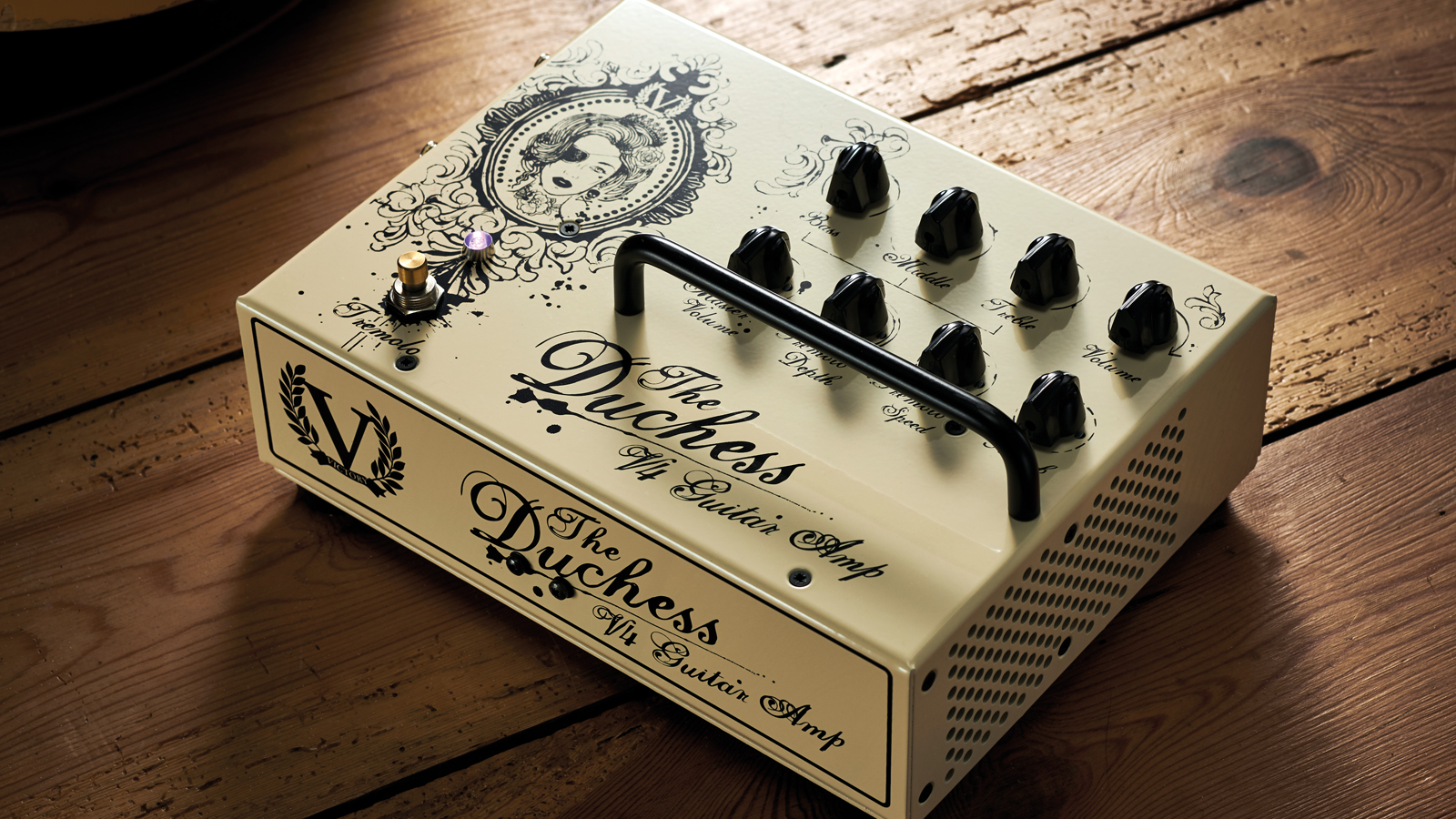
Specifications
Reasons to buy
Reasons to avoid
The Duchess Pedal Amp assumes a similar form to Victory’s V4 series of pedal preamps, but it’s a fully functioning amplifier with a whopping Class D power stage that delivers 180 watts at 4 ohms, and a truly lush valve-driven preamp that makes damn sure you don’t mistake this as just some kind of practical option for the gigging musician.
Sure, it is practical, but it is the tones that will have the hair on the back of your neck standing to attention. Specifically, clean tones, and with a boutique low-gain tone profile like that, it should come as no surprise that the Duchess just loves overdrive pedals.
The enclosure is super-tough, powder-coated steel, with its complement of chickenhead knobs protected by a raised steel kick bar. A single footswitch turns the tremolo on and off. For itinerant players, this could be the ultimate amp.
Read the full Victory V4 The Duchess review

10. Fender ’68 Custom Princeton Reverb
Our expert review:
Specifications
Reasons to buy
Reasons to avoid
The Fender Princeton Reverb has long been considered the Goldilocks option for those looking for an all-valve combo with manageable volume, but one that’s loud enough for small shows.
There is a reasonable amount of headroom on offer, with its bell-like cleans mother’s milk to blues and country players, and as you crank up the volume you’ll find a gritty breakup that’s warm, musical and addictive.
This ’68 reissue comes with the silver-panel and aluminium grille cloth trim. Under the hood it has been tweaked by Fender so it will take pedals better, with negative feedback reduced to enhance its response and bring on overdrive that little bit quicker. Under the hood you’ll find hand-wired valve sockets and custom-made Schumacher transformers. The tube-driven reverb and tremolo is divine.
Read our full Fender '68 Custom Princeton Reverb review
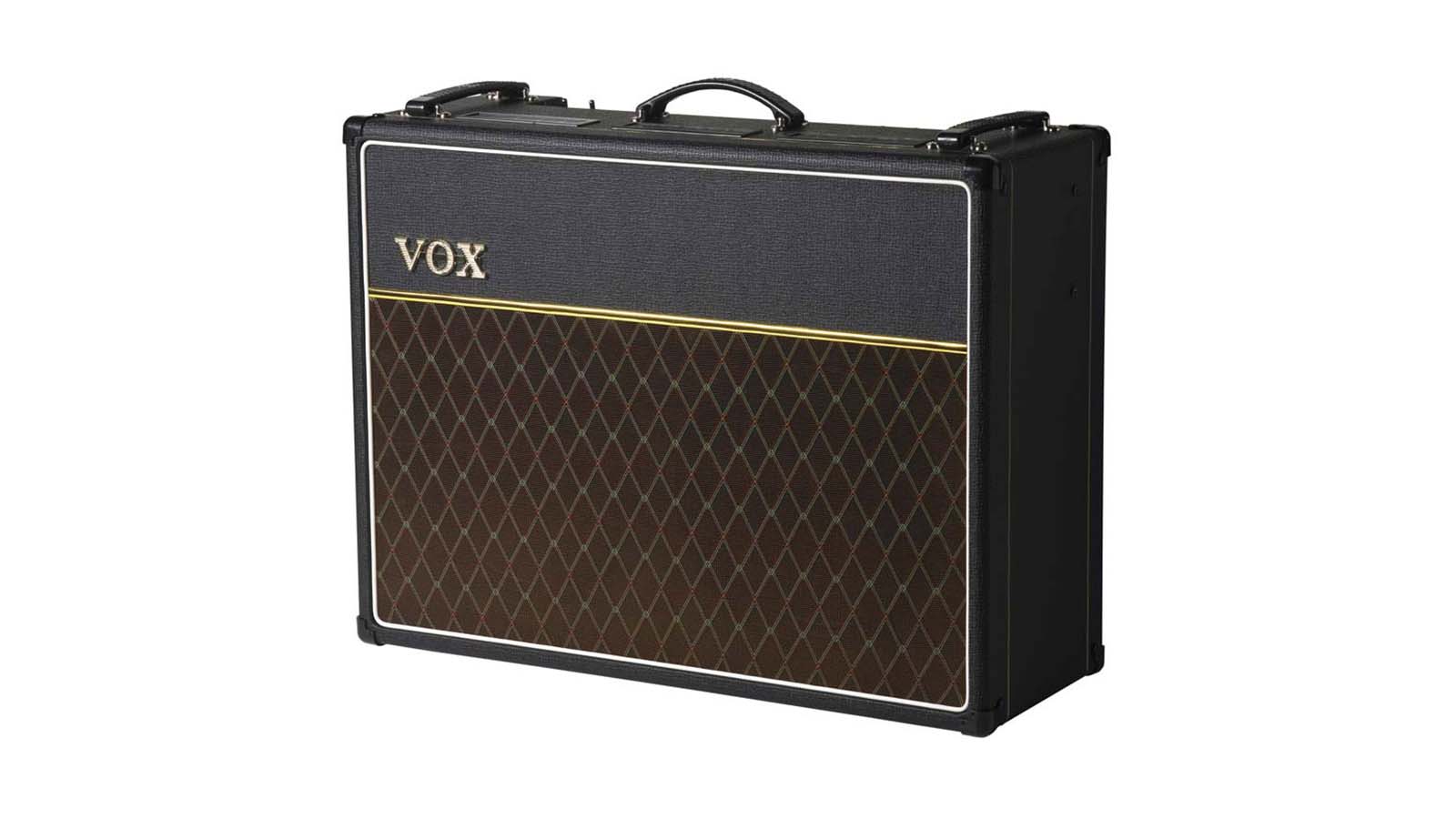
Specifications
Reasons to buy
Reasons to avoid
The new-ish AC15 'Twin' retains the all-important dual-EL84, cathode-biased output section of its forebear, but otherwise it's very different. A quick scan across the top panel reveals two inputs for independent access to either normal or top boost channels.
One benefit of the bigger, 2x12 enclosure is that it provides ample room for a full-length reverb tank, housed in the bottom, which we think sounds superb! There's also an in-built tremolo effect, with controls for depth and speed.
But the whole point of this amp is the pair of 25-watt Celestion G12M Greenback speakers. They are the speaker of rock in so many cases and while purists might hope for Celestion Blues, they would add a fair amount to the price; and the increased power handling of two Greenbacks on the end of just 15 watts is quite a tantalising prospect.
It's fair to say that even with the master volume set-up, the magic doesn't really start happening until the amp's lungs are at least halfway open, but happily, that's not far from perfect for many of today's pub and bar gigs – it may even be too much for some.
Read the full Vox AC15C2 review
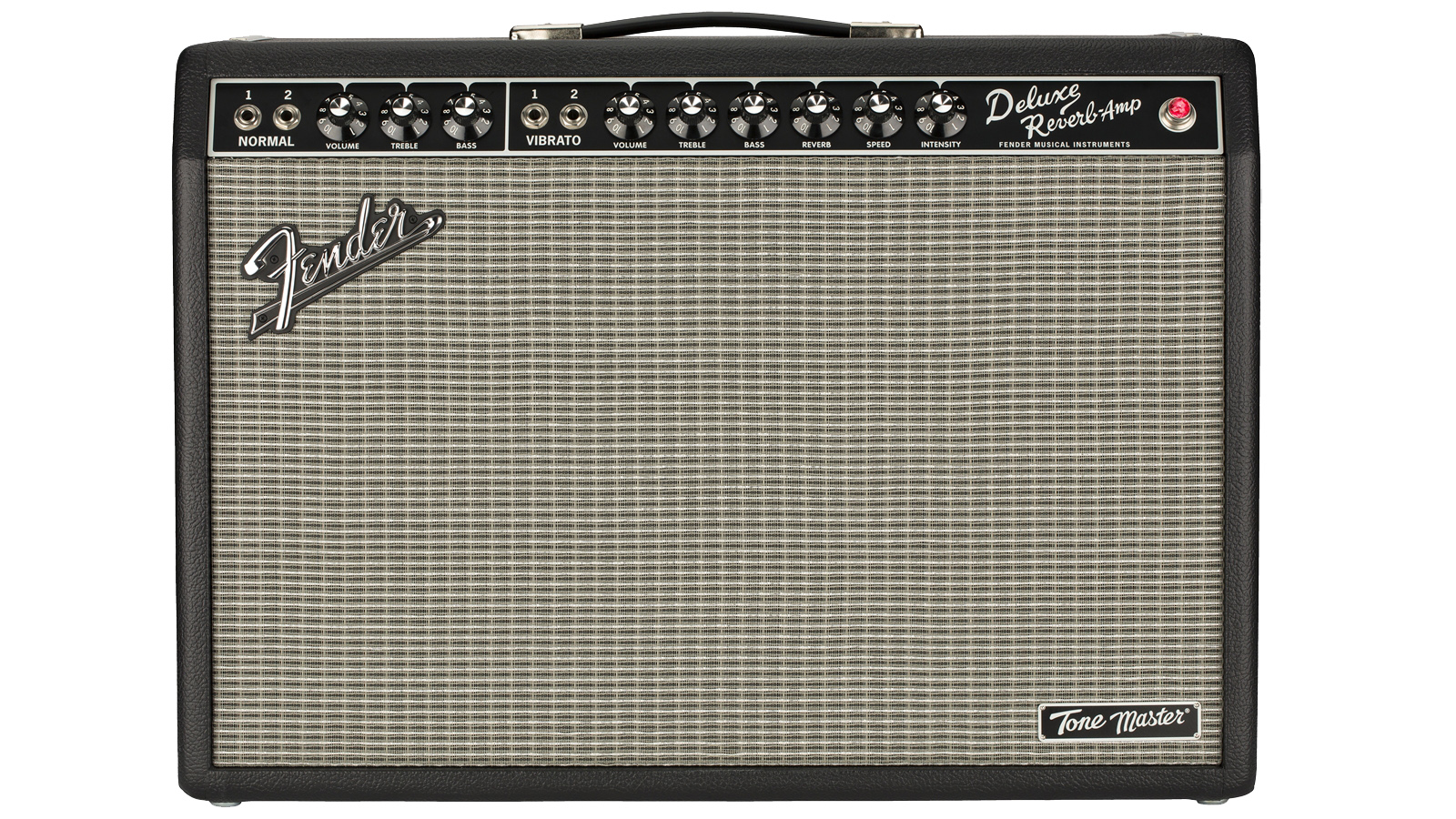
12. Fender Tonemaster Deluxe Reverb
Our expert review:
Specifications
Reasons to buy
Reasons to avoid
The Tonemaster series has been the centre of an interesting turn of events for Fender. Reissuing their iconic Deluxe and Twin Reverbs was only ever going to be a welcomed move, but (and some of you may need to sit down for this) taking out the valves has definitely split opinion. But hey, dry your eyes champ - because this Deluxe sounds just as good as any valve-ified version.
Relying on it’s massive digital processing power to emulate the tone of an all-valve Deluxe, it absolutely holds its own. The sparkle and clarity we’ve come to expect from Fender amps is all there, thanks in part to the 12” Jensen N-12K speaker amd the resonant same-as-the-original pine cabinet.
As the Tonemaster is designed to replicate valve-esque breakup response, Fender has also included an in-built attenuator for those times when you need to bring it down a notch. The rear panel also contains a balanced line out with cab simulations, making this Deluxe great for silent recording or smaller gigs where mic’ing amps isn’t possible. Oh, and it’s half the weight of it’s all-valve predecessor. Fender has nailed it here, if we do say so ourselves.
Best guitar amps: $/£1,001 - $/£1,500

13. Blackstar St James 50 EL34 Combo
Our expert review:
Specifications
Reasons to buy
Reasons to avoid
It feels and sounds like Blackstar took all its years of know-how and showcased it in the St James series: the lightest 50-watt valve amps you''ll currently find anywhere thanks to their casing and speaker technology, and some of the best all-round rock tones we've heard from a contemporary valve combo amp.
While the 6L6 head and combo versions are available for higher gain needs, our choice is this EL-34 iteration, then using our overdrive pedals for any additional needs. The clarity and articulation in the second channel's drive tones is hugely satisfying, while the Fendery cleans in channel one could make for a great pedal platform,. The flexibility of the power modes really helps the St James respond to your needs in any environment with 50W, 2W and a SAG switchable modes available.
Combined with the editable mic'd emulations of its CabRig technology for direct recording, this feels and performs like a very carefully considered valve amp from Blackstar that combines classic finesse with forward-thinking design.

14. Roland JC-120
Our expert review:
Specifications
Reasons to buy
Reasons to avoid
Since its release in 1975, the JC-120 has been on countless era-defining records. Andy Summers, Johnny Marr and Robert Smith have all been religious users of the Jazz Chorus line, in turn making it one of the most iconic solid state options of the last 45 years.
The JC-120 is named so due to the lush onboard stereo chorus effect that has made it so desirable. This is down to the fact that the JC-120 essentially has 2 60w amps inside of it - one for each speaker - allowing for ‘true’ stereo rather than an approximation. In ‘true’ stereo, the JC-120’s immersive chorus provides an almost other-worldly playing experience.
It’s an ideal pedal platform, too. With transparency and preservation of tone being key features of the JC-120, you’ll have no problems crafting your tone with additional pedals or other hardware. If you like to use overdrive or distortion, a pedal is almost a necessity with this amp - but you’re not buying an amp with ‘Jazz’ in the name for its gurn-inducing gain, are you?
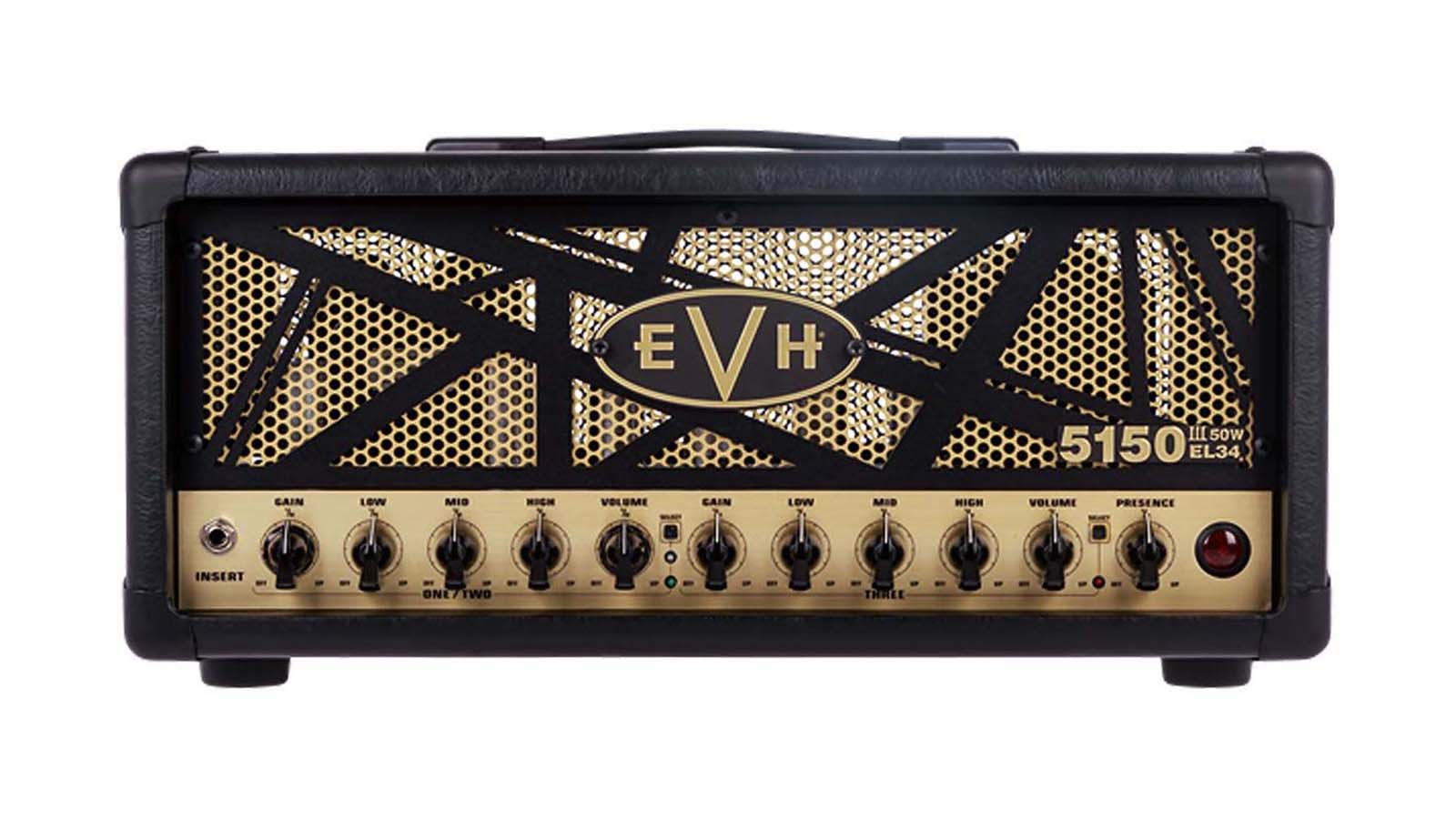
Specifications
Reasons to buy
Reasons to avoid
Sometimes you have to split the atom with a saturated level of gain that would violate health and safety in pretty much all other contexts, and that’s an occasion where you’d hope to find the EVH 5150III on the backline.
This amp bears Edward Van Halen’s initials on the front, so take it as read that you can access that harmonically volatile weekend rock tone, but dime the lead channel and you’ll have all the gain you need for contemporary metal too.
And yet, there’s subtlety and complexity to be found here – even at the extremes. The 5150III’s gain is rich in harmonics. It is dynamic, and with the EL34 power tubes it takes on the tonal character of a hyper-trophied Marshall Plexi. This is guitar tone as spectacle, a roman candle of overdrive with a very usable clean channel.
Read the full EVH 5150III 50W EL34 review
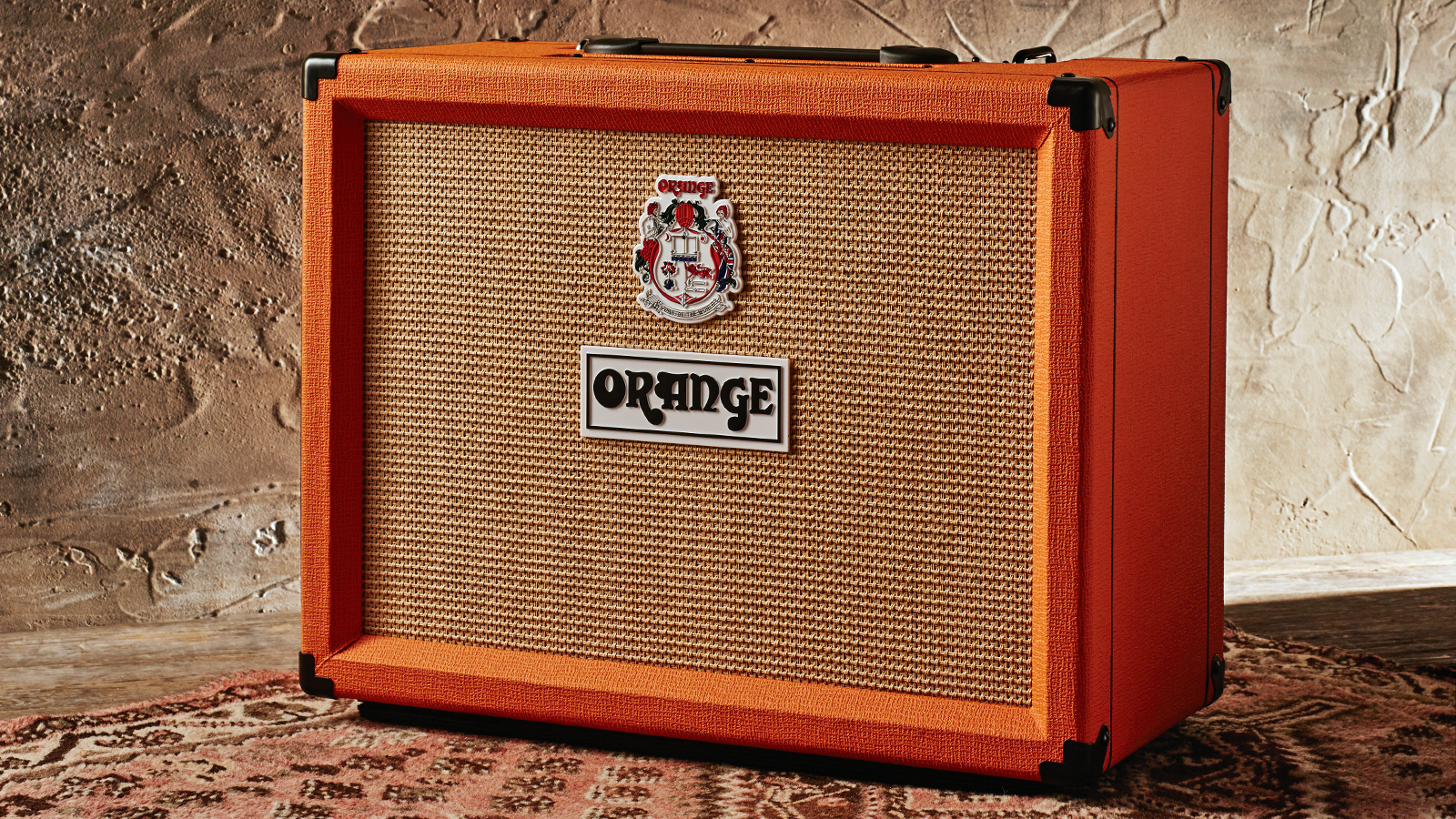
Specifications
Reasons to buy
Reasons to avoid
The Rocker 32’s secret weapon is its stereo capabilities courtesy of two output stages and a mono out/stereo in valve-buffered effects loop – and it’s this that opens the door to some tantalising effects possibilities. It also features a half-power option incorporated into the front panel standby switch.
The enamel control panel follows Orange’s classic 1970s ‘graphics only’ format, using pictograms to describe the control functions. The Dirty channel includes gain, bass, mid, treble and master volume controls, while the clean Natural channel has a single volume control. The Natural channel may only have a single volume control, but it’s perfectly dialled in to flatter practically any guitar and it sounds wonderful, with a glassy treble giving way to an addictive chime at higher volume levels.
The Dirty channel’s gain control has a very wide range, allowing fine control of moderately driven sounds, with plenty of Dark Terror-approved filth at the top of its travel, making it ideal for everything from classic Brit rock and blues to modern metal.
Read the full Orange Rocker 32 review
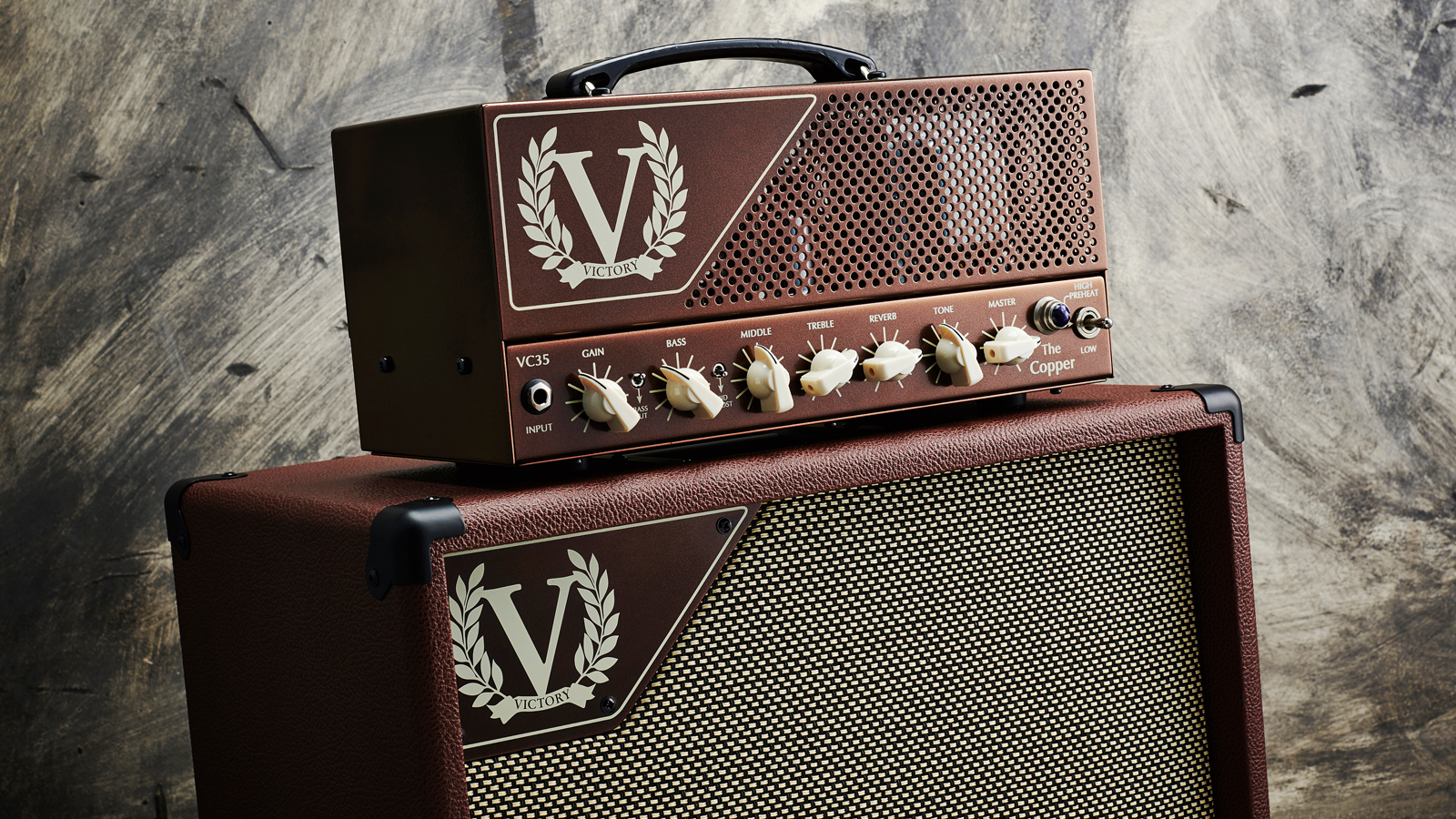
Specifications
Reasons to buy
Reasons to avoid
You could go through the Victory lineup and find any number of contenders for a list such as this, but there is a timeless British quality to the Copper’s voicings that takes the cake, in our view.
The Copper deploys a NOS EF184 small-format pentode in the preamp that’s not dissimilar to the EF86 in early Vox amplifiers, and that harmonically rich treble and sumptuous dynamic response is there in spades.
But the Copper is more than just a throwback to Vox. If the ‘60s pop-jangle is its bread and butter, dialling up the gain finds something very musical that’s ideal for classic rock. Set clean and sweetened by the reverb, it has a quasi-American boutique vibe, and a response that feels just right for blues.
The Copper takes pedals well, it’s portable, and when you compare it to the overheated US market for deluxe amplification, it offers excellent value. The pricier Deluxe version has valve-driven spring reverb and tremolo.
Read the full Victory VC35 The Copper review
Best guitar amps: $/£1,500+
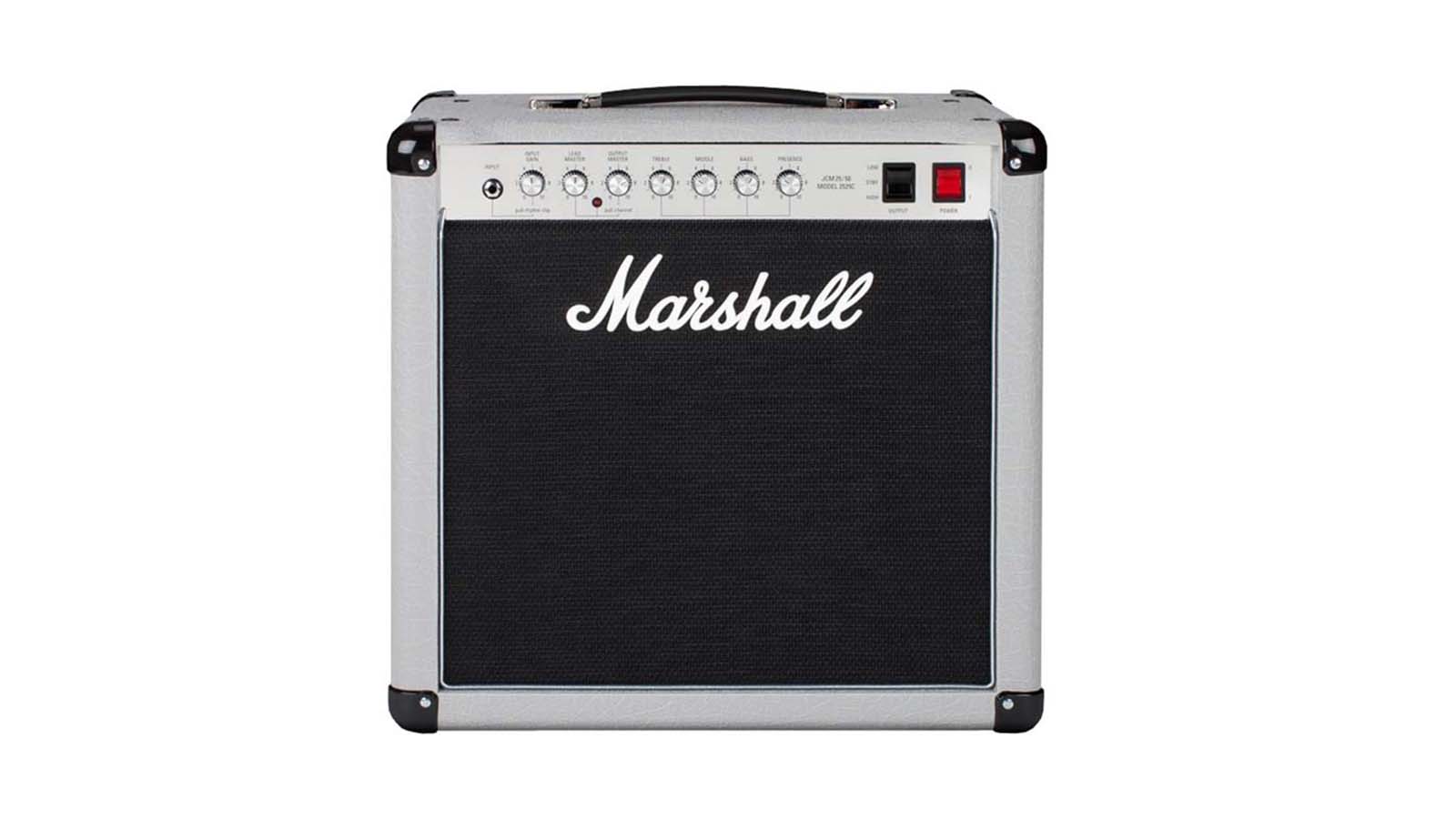
Specifications
Reasons to buy
Reasons to avoid
For many years, the Marshall Silver Jubilee was the amp that got away. Produced in limited numbers in 1987 to celebrate 50 years of Marshall, the Silver Jubilee is effectively a JCM800 that has been factory-modded to run a little hotter, and it was something of a minor tragedy that it never entered the always-in-production category its performance deserved.
This is the Appetite For Destruction tone, the Slash amplifier, and it’s one of the most rocking amplifiers Marshall has ever assembled. The 2555X head offers it in its original 100w/50w format but the 2525C feels a little more manageable for today’s player. It’s still brutally loud in its full 20W mode, but switchable to 5W, it puts that iconic crunch within reach of the world’s domesticated rock animals.
The gain structure on the Jubilee is something to behold but the Frusciante-esque cleans are not to be sniffed at either. It sounds good with pedals and will definitely stand up to most drummers. At close to $2000 in the US (but around half that price in the UK currently) it’s a serious investment, but a serious rock and metal metal amp.
Read the full Marshall 2525C Silver Jubilee Combo review

Specifications
Reasons to buy
Reasons to avoid
Based on Mesa's flagship Mark V, the Mark Five: 25 head is small, perfectly formed and typical of Mesa's superlative design and attention to detail. Two independent channels, each with three very different voice presets, combine with Mesa's iconic five-band graphic EQ for a choice of 12 sounds. You can footswitch between the channels, with the graphic on or off for quasi four-channel operation and preset 25 or 10 watts per channel.
One of the best features lives on the back panel: a CabClone speaker-emulated direct output, with a speaker defeat for silent recording or practice, using the built-in headphone socket. Despite the Mark Five: 25's long feature list, it's very easy to use and its tones are sensational.
The rhythm channel covers the shimmering clean tones of the modern Boogie and the fatter 'blackface'-inspired midrange of the fabled Mark I, while the Mark V crunch voice is so deep and three-dimensional you could record an entire album with it. The lead channel is equally inspiring, with a perfect rendition of the Mark IIC's overdrive tone (arguably the most coveted Boogie sound), along with more modern distortion effects that sound unbelievably good when tweaked with the graphic.
Read the full Mesa/Boogie Mark Five: 25 review
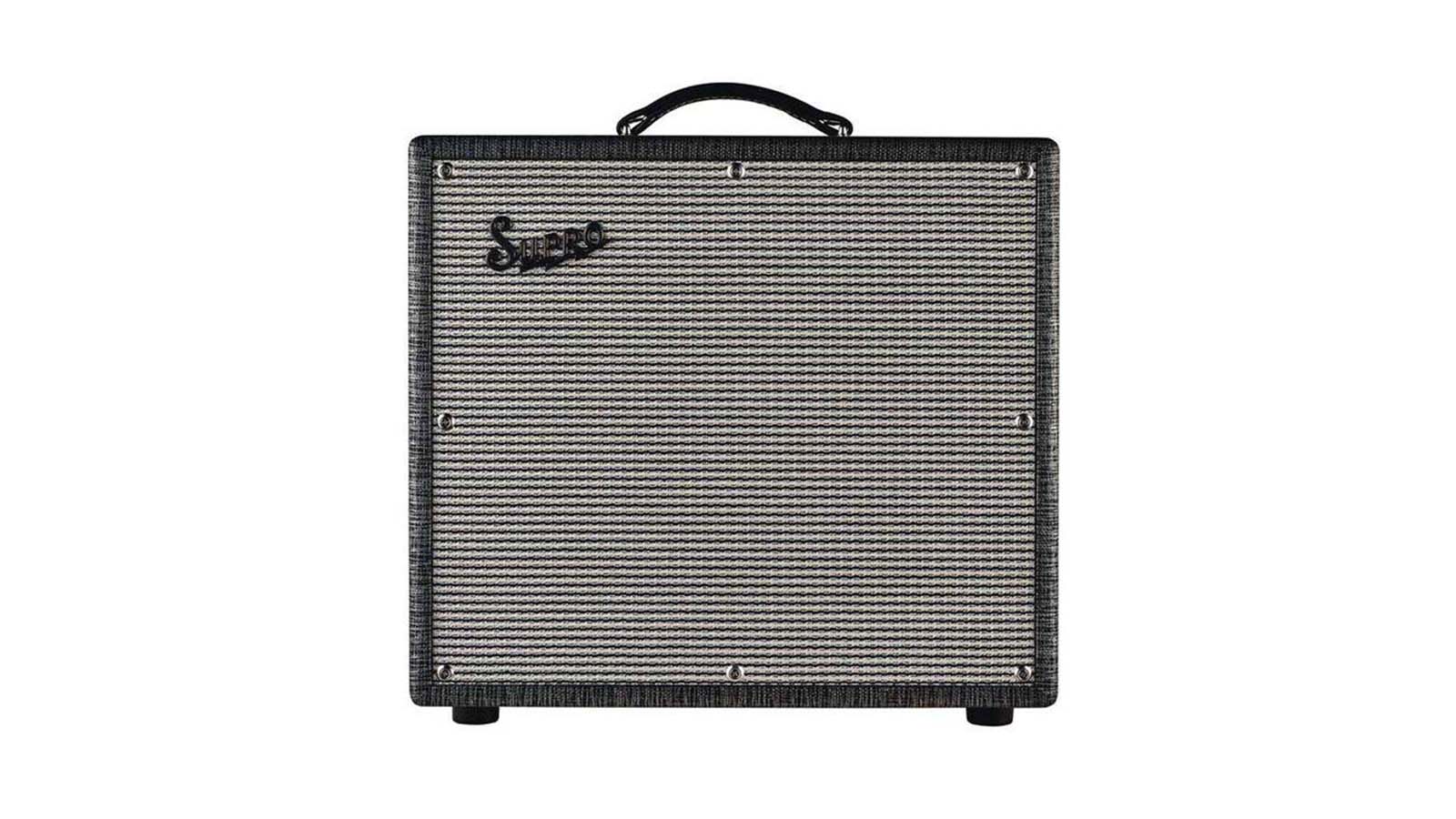
Specifications
Reasons to buy
Reasons to avoid
Lenny Kravitz was involved in the design of the 169RT Black Magick Reverb, and at his behest there is treble, there is reverb, and there is master volume. But, still, and Lenny would forgive us, the guitarist we think of when we think of the Black Magick is Jimmy Page, with the original Black Magick a replica of his old Supro Coronado.
Those Led Zeppelin tones wouldn’t just fall out of the box; you had to be generous with the volume, but with a master volume control and treble and bass replacing a master tone control, the 169RT Black Magick Reverb offers you a safer passage to those houses of the holy. Linking the channels opens up a new frontier in gain for this amp.
The tremolo has been improved, offering up to twice the rate of the original amps, while the valve-driven six-spring reverb allows for some subtle depth and space or a weekend’s surfing depending on how you set it.
Read the full Supro 169RT Black Magick Reverb review

Specifications
Reasons to buy
Reasons to avoid
Neural DSP is a name you’ll have likely heard before if you’re familiar with guitar production and software. Responsible for some of the most sophisticated and high-fidelity guitar VSTs in recent memory, Neural DSP has decided to put their amp modelling expertise into their first ever hardware unit. Meet the Quad Cortex.
With 50+ onboard amp models and over 1,000 more amp algorithms in the sound library - as well as over 1,000 impulse responses and 70+ effects - the QC is designed to sound great, look great, and never limit your creativity. The amp models take care of all styles of playing, from ultra-clean country twang to rib-crushing gain and everything in between.
Neural DSP describes the Quad Cortex as a ‘vulgar display of power’, and we’d have to agree - although there’s nothing vulgar about it, except the time it made us think about selling all of our tube amps. We're not surprised though, as it's our number one pick in our best amp modellers guide.
Read the full Neural DSP Quad Cortex review
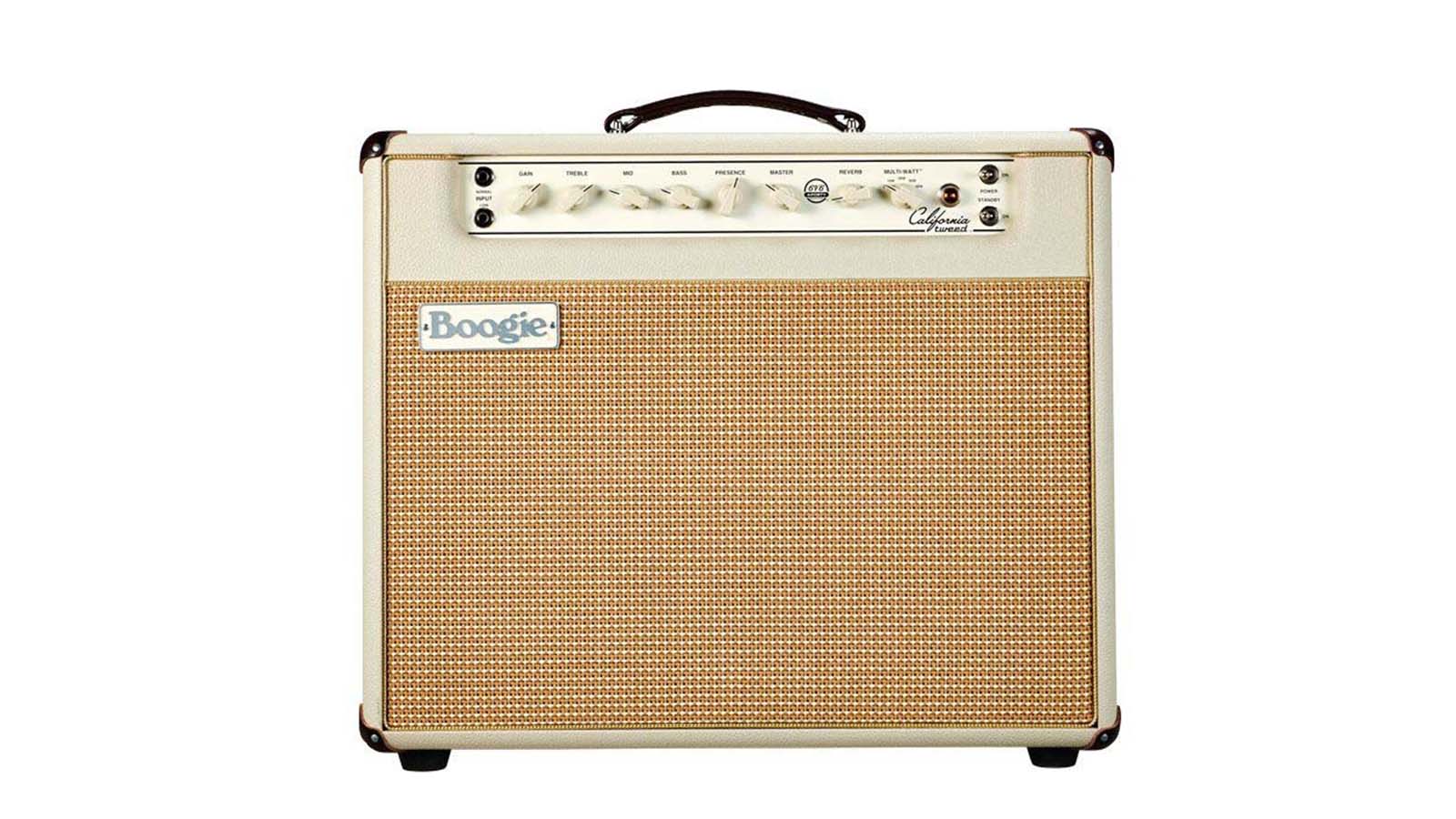
Specifications
Reasons to buy
Reasons to avoid
Some Mesa/Boogie amps are set up for the inveterate seekers, players who crave options and lots of them, so the California Tweed feels like a change of pace. It is a simple, single-channel affair, with high and low-gain inputs on a simple front panel with controls for gain, presence, reverb and master volume and a 3-band EQ, and it offers instant access to the finest Tweed tones you can buy, all sauced by the sweetest valve-driven spring reverb.
A five-way rotary dial lets you switch up the California Tweed’s output, offering five different power outputs from a full 40 watts, where the headroom is gin clear, right down to 2 watts, where it is a little more squashed, ideal for the home, and full of Billy Gibbons’ Texas crunch when you dime the gain.
The California Tweed is breathtaking, a throwback to a golden era in guitar amplification, but very much built for today. It’d make a fine pedal platform, with a series effects loop and a Jensen Blackbird Alnico that can handle a lot of volume. Exceptional all round.
Read the full Mesa/Boogie California Tweed review
Best guitar amps: Buying advice

Amplifiers have been around longer than the electric guitar. Early units were made as portable PA speaker systems around the start of the 20th century. Since the invention of the electric guitar, however, amplifiers designed specifically to enhance the signal from an electric guitar have come in all different shapes and sizes, with a massive range of different features available. Finding the best guitar amp for you will involve considering a few key points before buying. Let’s take a look.
Tube amp vs solid state vs digital amp?
MusicRadar's got your back
At first, all guitar amps were tube amps, that is until transistors were invented and utilised in amp technology - these are known as solid state amps. Despite solid state amps usually being lighter and cheaper, many players still prefer the tone and response that you get from a tube amp.
As you turn the volume up on a tube amp, you start to get a natural breakup to your sound - this is harmonic distortion which is perceived as the most organic type of overdrive. You’ll also get some natural compression happening, plus they respond really well to your picking hand, allowing you to play with loads of dynamics. Most of the guitars you hear on rock, country, blues and many more records are likely to have been played through tube amps - they’re still very much the gold standard for a lot of players.
Amps like the Boss Katana have some great clean sounds, alongside high gain tones, with everything else in between.
However, tube amps aren’t always practical - if you want a practice amp for home use, then you probably won’t be able to turn it up without your family or neighbours complaining. This is where solid state and digital amps can be useful - they will sound the same, regardless of the volume you’re playing at. However, if you’re playing in pretty big venues, then you’ll get away with cranking your amp to really get those tubes singing.
Solid state amps also won’t distort as you turn them up, so if you want a clean sound and want to be able to turn it up loud, then they can be a good choice. They also make a great platform for pedals. If you’ve got a distortion or overdrive pedal that you like the sound of, you can run those through your clean solid state amp and get a consistent sound everywhere you play.
Digital and modeling amps quite often have a bunch of different sounds built in, so they’re great if you want versatility. Amps like the Boss Katana have some great clean sounds, alongside high gain tones, with everything else in between. You’ll usually find effects built in too, saving you money on pedals. High-end digital amps like the Kemper have a range of sounds built in that are essentially digital snapshots of certain amps. This gives you authentic tube-like tone, in a digital package - the best of both worlds!
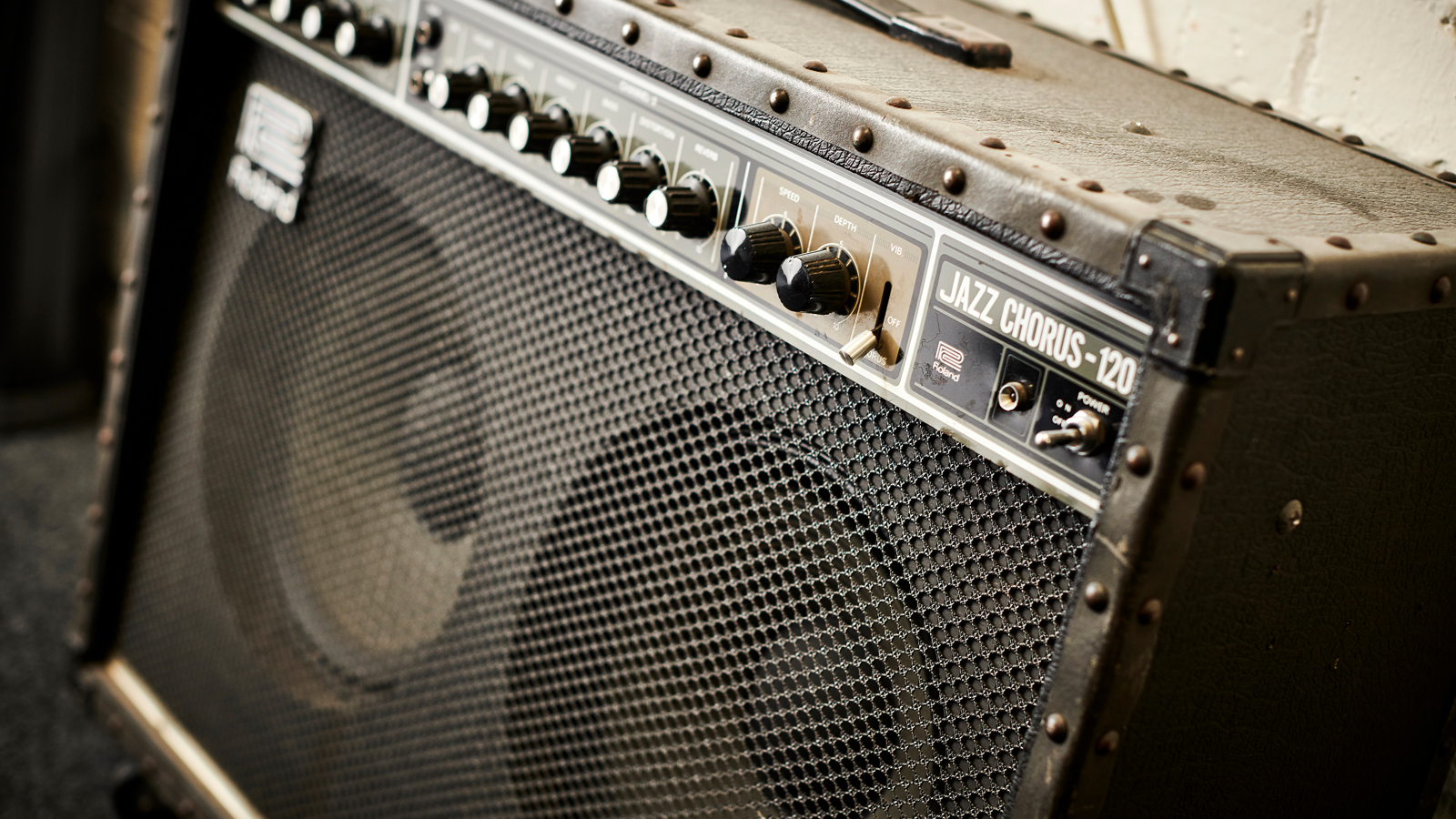
Head vs combo vs pedal amp: which format is right for you?
When buying an amp, it’s worth thinking about whether you want a combo, or a head. A combo is all parts of your amp, plus the speaker - everything’s in one box, as it were. A head is the preamp and power amp section, and requires an external speaker, or cab, for you to actually hear anything. Heads can be useful if you’re gigging, as many venues have a house cab, so you can just turn up with your guitar and head.
The question of head versus combo has been complicated in recent years by the dawn of the pedalboard amp – a guitar amp that’s housed in an enclosure the size of a small multi-effects unit, yet often powerful enough to replace your amp head.
The benefits are obvious with a pedalboard amp. Throw it in your backpack and you’re ready to go. They can be super versatile too, with the likes of the four-channel format of BluGuitar’s Amp 1 offering a lot of tones for its price and footprint.
But this all depends on how important portability really is to you. The traditional amplifier head, which you would then hook up to an external speaker cabinet, remains a hugely appealing prospect, particularly if you have a speaker cabinet ready to go at home, and if you regularly pay for rehearsal space at a studio they’re sure to have a cabinet ready and waiting.
On the flipside, the combo is an amplifier and speaker all in one neat little box. Size definitely matters here. A small combo with a single 10-inch speaker can still be a significant burden to cart around, but for many of us, the convenience of having an all-in-one setup is just too great - especially if it’s mostly going to be kept at home.
How powerful does your guitar amp need to be?
Think about wattage too - if you just want to play at home, then a small guitar amp with a low wattage will do fine. If you’re going down the tube amp route, go for as low a wattage as possible - that way you can crank the preamp section, and it won’t deafen everyone! Likewise with solid state and digital amps, whilst the tone won’t vary too much depending on the volume, there’s no point paying for more than you need.
If you’re looking to play some gigs, then you’ll want to go for something with a bit more power. It’s worth noting here that the perceived volume of tube amps and solid state/digital amps is not the same - that is, usually, a 20W tube amp will be louder than a 20W solid state amp. 15/20W is a fairly sweet spot for tube amps if you’re playing small to medium gigs as you can push them nicely into overdrive whilst keeping on the good side of the sound technician. For solid state and digital amps, you’ll probably want to look around 100W to really be heard at shows.
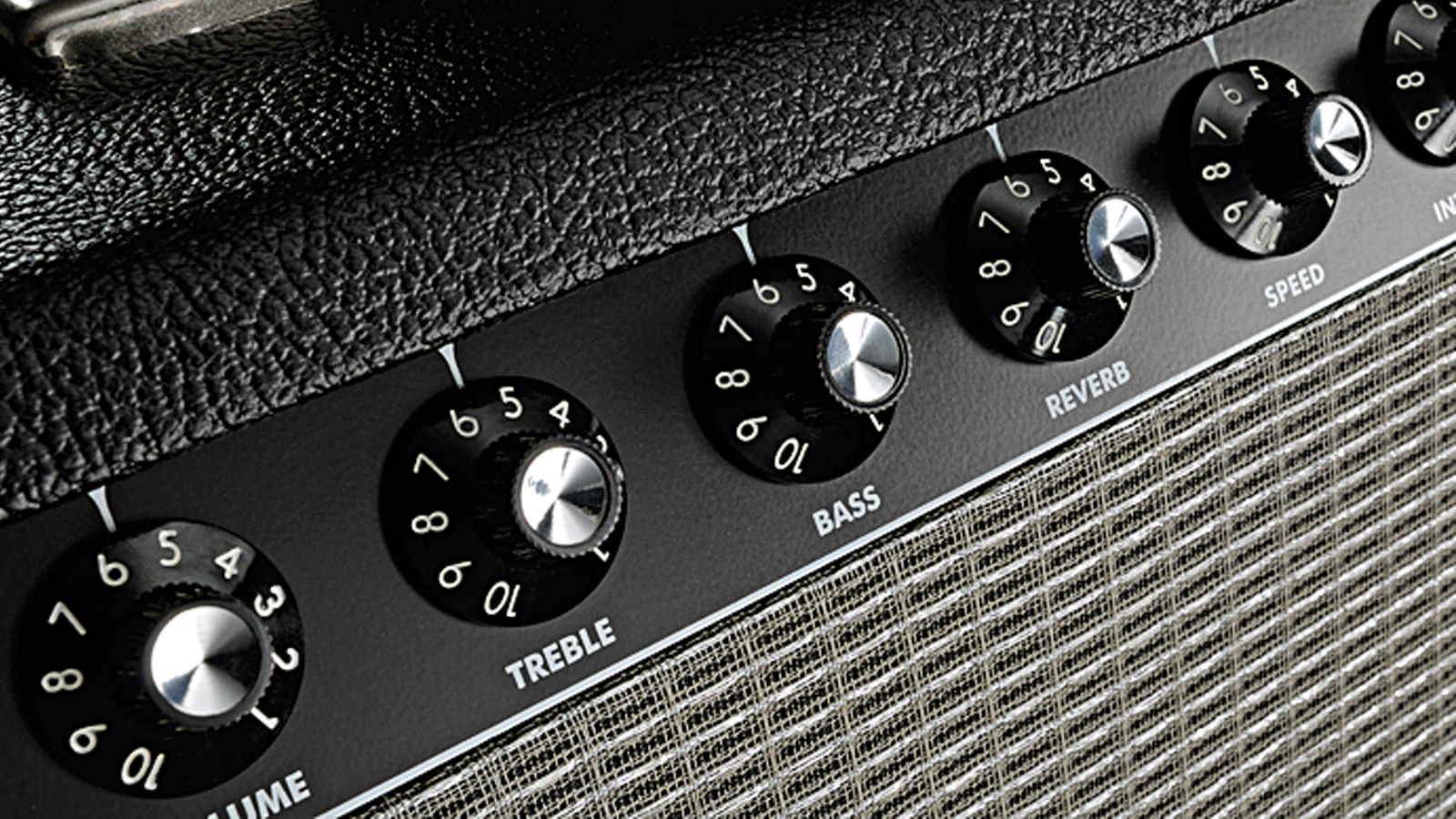
Which brands make the best amps?
Well, that’s a tough question to answer. The beauty of guitar amps is that they are all different, and have different tones and characteristics. It’s worth figuring out what sounds you like first. You’ll have a better idea of the right amp brand for you once you’ve got that figured out.
For the clean players among us, brands such as Fender and Vox are two brands to pay attention to. Their guitar amps are mostly tube amps, so they produce an organic, harmonically-rich tone. Fender amps tend to sound a bit warmer and smoother than Vox amps, which are designed to sound quite bright and crisp. Brands such as Victory are worth keeping in mind too, as amps like The Duchess and The Copper are boutique takes on Fender and Vox amps, respectively.
If you’re more keen for a metal amp, then Mesa Boogie, Hughes & Kettner and Peavey all have you covered - though lots of metal players are going digital these days, too.
If digital is something that interests you, then you can’t really get any better than the Neural DSP Quad Cortex. One of the newest additions to the world of amp modelling, it’s capable of delivering any amp tone you can dream of to your feet. Impressive, huh?
You also can’t go wrong with a Marshall - the JCM800 is a classic for a reason, particularly for straight up rock players - and the rest of their amp lineup is killer, too.
How much should I spend on a guitar amp?
Price is also a consideration - all of the amps in this guide are a good choice, but if you’re a beginner then you don’t really need to spend loads on a bedroom amp - you can get something cool for well under $/£500. If you’re looking to step up to a professional rig, whether tube or digital, then for top-notch tone and reliability, you’re probably going to be looking at spending up to $/£1000 - maybe more.
Is buying an amp online a good idea?
You needn’t be worried about buying an amp online before trying it out. Online music instrument retailers like Thomann, Sweetwater and Sam Ash offer hassle-free returns as standard, so you can purchase an amp, play it in the comfort and privacy of your home and, if it’s not for you, send it back with ease. Check the specific returns policy for your chosen retailer before you purchase, but most offer between 30-45 days to return an item, as long as it’s in original condition.
How we test guitar amps
When we test any of the best guitar amps, it's important that we test them in a way which is relevant to their intended use. All amps come in different shapes and sizes, and there's no use testing an amps highest volume and projection if it's designed to be used as a practice amp.
One thing we always test, however, is the build quality. This check comes first, and we take a look at how well the amp is made, how strong and sturdy it is, and how the dials and controls feel. They should have a smooth action with a small amount of resistance.
When it comes to testing out the tone of an amp, we start with every EQ and tone-shaping control in the middle. If the amp has multiple channels, we'll start with the clean channel and work our way through to the highest gain option. We'll then start tweaking the EQ as we would if it were our own amp, pulling out some of the best tones. While doing this, we'll pay attention to the sweep of the EQ, making sure there are no dead spots or big jumps from one setting to another.
We then check any extra features the amp may have. Emulated outputs, onboard attenuators, effects - they all get tested to see how they fare.
Read more about how we test music making gear and services at MusicRadar.
Related buying guides
- These are the best budget guitar amps under $500/£500
- Smaller budget? Try the best guitar amps under $300/£300
- The best guitar amps under $/£1,000: top heads and combos
- If money’s no object check out the best high-end guitar amps
- Practice more with the best guitar amp headphones
- Rock out with our pick of the best Epiphone guitars
- Kick off your playing career with the best beginner guitar amps
- Cover your gear with our guide to musician's insurance
Want all the hottest music and gear news, reviews, deals, features and more, direct to your inbox? Sign up here.
Jonathan Horsley has been writing about guitars and guitar culture since 2005, playing them since 1990, and regularly contributes to MusicRadar, Total Guitar and Guitar World. He uses Jazz III nylon picks, 10s during the week, 9s at the weekend, and shamefully still struggles with rhythm figure one of Van Halen’s Panama.
- James Farmer
- Rob LaingReviews Editor, GuitarWorld.com and MusicRadar guitars
- Richard Blenkinsop
